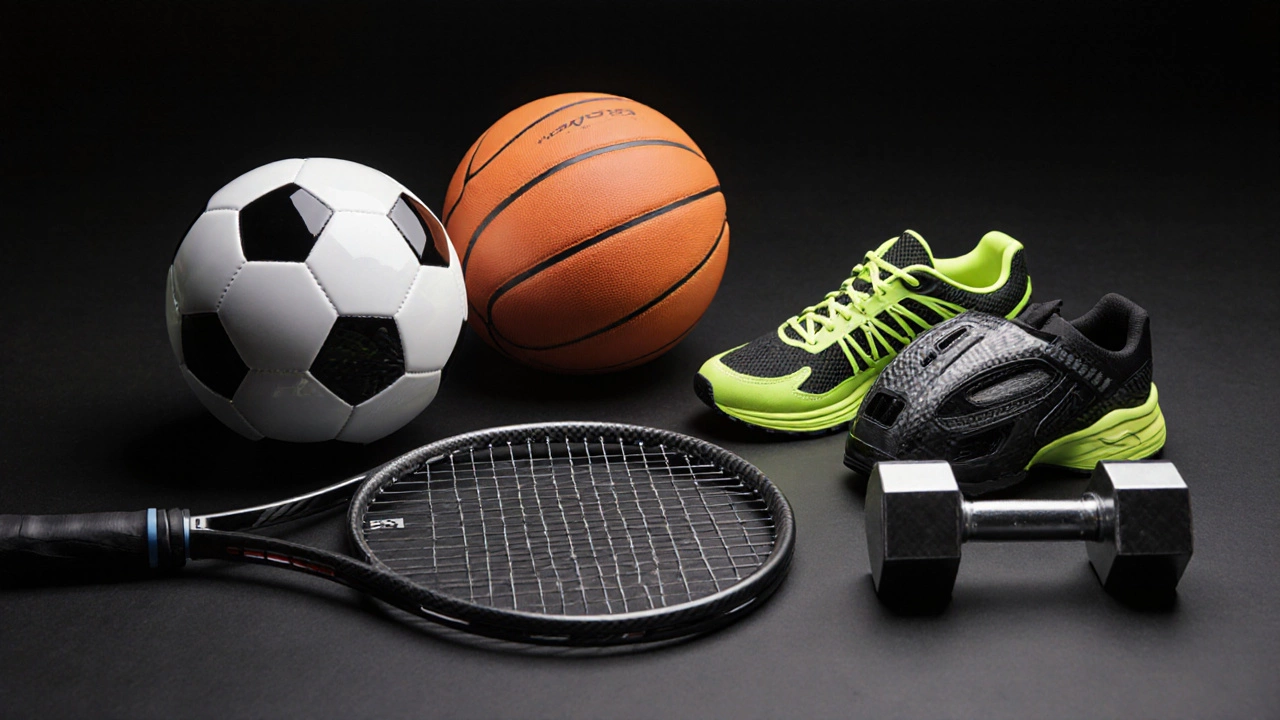
Exercise Tools: Your Ultimate Guide to Gear, Performance, and Safety
When working with exercise tools, the equipment that lets you move, lift, stretch, and track your body. Also known as workout gear, they dictate how quickly you progress, how safely you train, and how much fun you have.
Resistance bands represent the most portable exercise tools. They provide variable tension, which means the harder you pull, the more resistance you feel. This simple principle makes them perfect for warming up, rehab, and full‑body strength work. Resistance bands also let you train at home or on the road, so they’re a staple for anyone who wants flexibility without a gym membership.
Next up, dumbbells give you a solid weight source for classic lifts like curls, presses, and goblet squats. Because each hand works independently, dumbbells help correct imbalances and improve coordination. The key attribute of dumbbells is their fixed mass, which provides a reliable load for progressive overload—a core principle for building muscle.
For cardio lovers, cardio machines such as treadmills, ellipticals, and rowing rigs turn indoor space into a performance lab. They let you control speed, incline, and resistance, offering precise data on distance and calories burned. This data makes it easy to set measurable goals and track improvement over weeks or months.
Technology has added a new layer: fitness apps. These platforms sync with wearables, log workouts, and even suggest routines based on your history. An app can turn a dumbbell circuit into a structured program with rest timers and performance graphs, bridging the gap between raw equipment and personal coaching.
All these entities interconnect. Exercise tools encompass resistance bands, which enable variable tension training; dumbbells require progressive overload; cardio machines demand data‑driven pacing; and fitness apps provide the analytics that tie everything together. When you combine physical gear with digital tracking, you create a feedback loop that speeds up results and reduces injury risk.
How to Choose the Right Gear for Your Goals
Start by defining your primary aim—strength, endurance, mobility, or a mix. If strength is the target, prioritize dumbbells and resistance bands because they allow incremental loading and joint‑friendly movement patterns. For endurance, cardio machines and a reliable fitness app give you the numbers you need to stay motivated. Mobility‑focused athletes will benefit most from bands that stretch muscles safely, plus apps that remind you to move daily.
Budget is another practical factor. Bands cost under ten pounds, making them the most cost‑effective starter tool. Mid‑range investments include adjustable‑weight dumbbells, which grow with you, while high‑end cardio machines and premium app subscriptions sit at the top of the price scale. Remember, the most expensive gear isn’t automatically the best for your personal routine.Maintenance matters too. Clean your bands after each use to prevent rubber degradation, wipe down dumbbells to avoid rust, and schedule routine checks on cardio machines to keep belts and rollers in good shape. Most fitness apps update automatically, but you should review privacy settings regularly to protect your data.
Finally, think about space. A small apartment can comfortably hold a set of bands and a pair of adjustable dumbbells. If you have a dedicated workout room, you might add a treadmill or a rowing machine. Aligning gear with your environment ensures you actually use the equipment instead of letting it collect dust.
By understanding how each piece of equipment works, what it requires, and how it fits your lifestyle, you unlock the full potential of your training routine. Below, you’ll find a curated collection of articles that dive deeper into specific tools, techniques, and tips, giving you actionable insights to level up your fitness game.
